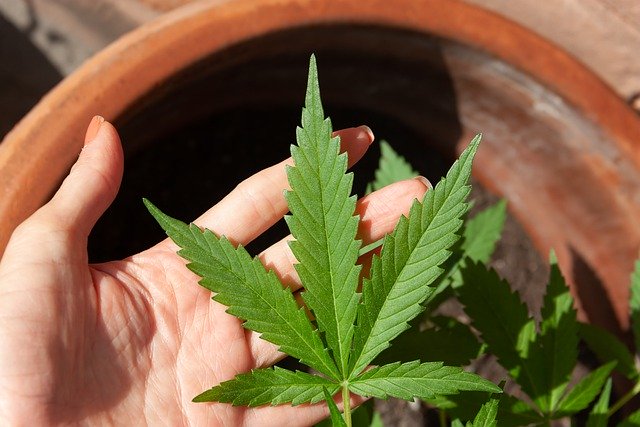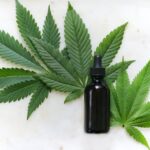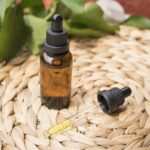The popularity of products derived from the cannabis plant has dramatically increased in recent times. Especially thanks to its properties and effects on the system. Users of cannabis-derived products claim that they may help to ease a number of conditions, including stress, anxiety, glaucoma, seizures, and nausea associated with chemotherapy treatments. But, despite all the news and information about the plant, the properties of cannabis are still relatively unknown to many people. Consequently, its use remains controversial. The reason for the controversy is that many people consider that the cannabis plant can only be used to get “high”. But is this really the case? In this article, we’ll explore the plant and the properties of its two main components: CBD vs. THC.
CBD vs. THC: The Cannabis Plant
Cannabis is indigenous to Eastern Asia, however, today its use is widespread around the world. The cannabis plant has been used for thousands of years thanks to its effects, including its medicinal properties. But the plant has many other uses. For example, hemp, one of cannabis’ varieties, can be used to make biofuel, paper, and even foods.
Cannabis is an annual plant. This means that it germinates, grows, and dies within one year. Typically, it germinates in Spring, grows during Summer and flowers in Fall.
From a scientific perspective, all cannabis plants belong to the Cannabis sativa family. However, there are different varieties with different characteristics, i.e. different growing patterns, effects, and cannabinoid composition. The main three varieties are sativa, indica, and rudelaris.
Cannabis owes its properties to the cannabinoids that are present in the plant. Although the plant has a great number of components, the two main cannabinoids are THC and CBD. These cannabinoids have different properties and effects, let’s explore them below.
What Is THC?
Tetrahydrocannabinol or THC is the main responsible for cannabis’ psychoactive effects. THC binds to the cannabinoid receptors of the brain. These receptors are part of the cannabinoid system, which is involved in a variety of physiological processes, including memory, coordination, feeling of pleasure, the sensation of pain and appetite.
THC is the main component of the cannabis psychoactive plants. The amount of THC in each plant may vary, even in the same strain. In fact, it can range from a very low percentage in some plants to more than 25% in others.
This cannabinoid is the most controversial due to its psychoactive properties. And it is, in fact, the reason why cannabis is still illegal in many places, despite its therapeutic properties, which include:
- Pain-relief
- Anti-inflammatory
- Neuroprotective
- Antioxidant
- Muscle relaxation
- Relief of nausea
- Antitumoral

What Is CBD?
The other main component of the cannabis plant is CBD or cannabidiol. This cannabinoid is not psychoactive and can, in fact, counter the psychoactive properties of THC. Typically, the plants with high levels of CBD, have a lower concentration of THC.
The lack of psychoactive properties makes CBD an interesting option for those who want to enjoy cannabis properties without feeling “high”. CBD can be used to alleviate the following conditions:
- Inflammation
- Pain
- Anxiety
- Seizures
Additionally, studies show promising results in conditions such as arthritis, diabetes, alcoholism, multiple sclerosis, chronic pain, PTSD, depression, infections, epilepsy, and other neurological disorders. Also, CBD has neuroprotector properties.
CBD Vs. THC
As we have mentioned above, the main difference between THC and CBD is the psychoactive effects. Whilst THC has this property, CBD doesn’t produce any psychoactive or euphoric effects when consumed.
So, how do both substances work on the brain? THC is a CB1 and CB2 agonist. So, it acts by binding to these receptors of the brain, especially to CB1. By doing so, you will feel THC euphoric effects. On the other hand, CBD is an antagonist of the cannabinoid agonists. This way, it suppresses the activation of the CB1 receptors. Consequently, it will never make you “high”.
However, both cannabinoids have similarities and can be used to alleviate a number of conditions, including anxiety and pain, among others.
On the other hand, whilst THC is more prominent in the marihuana plant, CBD typically is extracted from hemp. Although both marihuana and hemp belong to the Cannabis sativa plant, there are differences between the two. Additionally, whilst hemp has been traditionally grown for its industrial uses, marihuana is favored for its recreational properties. Typically, hemp contains high levels of CBD and very low levels of THC. On the contrary, marihuana contains high levels of THC and low CBD levels. However, this distinction is not always true, as today we can find marihuana varieties with a high content of CBD (up to 14%) and very low THC (0.5%).
In conclusion, although CBD and THC are different substances, they both show promising results to treat a variety of co



